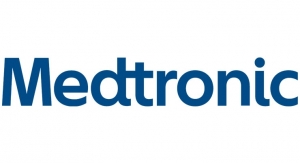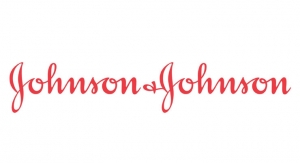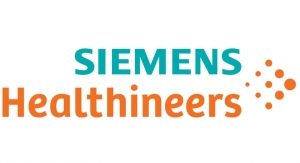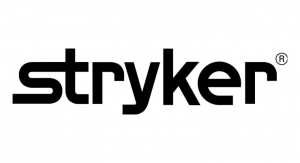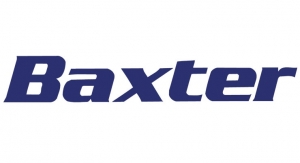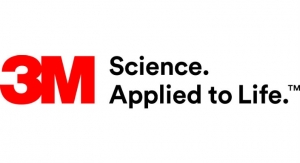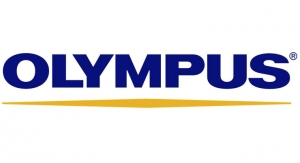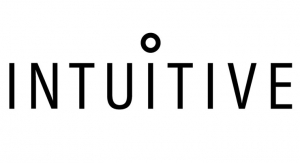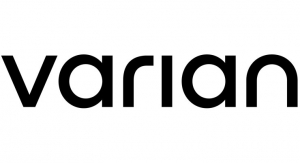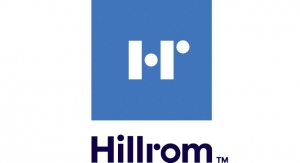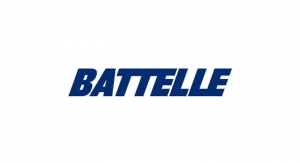07.30.19
AT A GLANCE
Rank: #7 (Last year: #7)
$15.58 Billion ($136.8B total)
Prior Fiscal: $13.52 Billion
Percentage Change: +15.0%
No. of Employees: 50,200 (total)
Global Headquarters: Dublin, Ohio
KEY EXECUTIVES
Gregory B. Kenny, Independent Board Chairman
Michael C. Kaufmann, CEO
Jorge M. Gomez, CFO
Jon L. Giacomin, CEO, Medical Segment
Victor Crawford, CEO, Pharmaceutical Segment
Michele A. M. Holcomb, Exec. VP, Strategy and Corporate Development
Craig S. Morford, Chief Legal and Compliance Officer
Patricia B. Morrison, Exec. VP, Customer Support Services
and Chief Information Officer
Jessica L. Mayer, Exec. VP, Deputy General Counsel and Corporate Secretary
“Lots of companies don’t succeed over time. What do they do fundamentally wrong? They usually miss the future.” — Larry Page, Alphabet Inc. CEO
How to (truly) Succeed in Business Without Really Trying: Ditch the handbook and heed Page’s advice.
It works. But not without really trying.
Virginia “Ginni” Rometty can vouch for the results, as Page’s wisdom has helped her orchestrate IBM’s protracted transformation into a cloud-based “solutions” business. During her tenure as CEO, the 61-year-old has invested billions of dollars in advanced technologies like AI and quantum computing, and sold off legacy assets that no longer fit the company’s revamped business model (last December, for example, IBM divested seven software products, including BigFix, Unica, and Connections).
Rometty, however, wasn’t always a devotee of Page’s business stratagem. When she first assumed leadership of IBM in January 2012, Rometty dutifully adopted her predecessor’s game plan—i.e., doubling the multinational conglomerate’s per-share earnings by 2015 ($20/share).
Yet more than two years into her tenure (and just 15 months from the deadline), Rometty realized the growth scheme she inherited would seriously hamper IBM’s efforts to reinvent itself (clearly a case of How Not to Succeed in Business, Despite Really Trying). Thus, she switched gears in October 2014, taking full ownership of the company’s future.
Securing that future hasn’t been easy, though (despite claims to the contrary from Shepherd Mead’s book and the Pulitzer Prize-winning Broadway musical). Amid its transformation, IBM endured 22 consecutive quarters of freefalling revenue and repeated bouts of frailty from a strengthening U.S. dollar. But a strict regimen of divestitures and strategic acquisitions seem to have helped the company recover its financial fortitude: net income last year skyrocketed 51.7 percent to $8.73 billion, and total revenue climbed 1 percent to $79.6 billion.
“I really believe the company has in its DNA the ability to change. We’ve done it over and over again,” Rometty told the Harvard Business Review two years ago. “...this is a more extensive transformation because of the convergence of multiple trends that are accelerating the pace of change. It doesn’t matter if you’re an insider so long as you don’t try to protect the past. Then you have the freedom to revinvent yourself for the long term.”
Cardinal Health CEO Michael Kaufmann is realizing the value in Rometty’s advice as he re-evaluates his company’s product portfolio, business mix, and cost structure. Like Rometty’s predecessor, Kaufmann has established a deadline-oriented growth plan—more than $200 million in annual savings by fiscal 2020—but he’s not depending on past practices to achieve it. Nor is he committing to any one specific approach.
“Let me be clear about the road ahead. I am not wed to the past,” Kaufmann, CEO since January 2018, told analysts last summer. “Everything is on the table when it comes to driving long-term growth, delivering shareholder returns, and serving our customers. All of us are committed to being disciplined, with a laser focus on achieving results in the months and years ahead.”
Such results are already starting to materialize: Cardinal Health’s overall revenue jumped 5 percent in FY18 to $136.8 billion, driven by solid gains in both of its business reporting segments. Strong drug distribution and specialty customer sales boosted Pharmaceutical proceeds 4 percent to $121.24 billion, while the July 2017 deal for Medtronic plc’s Patient Care, Deep Vein Thrombosis, and Nutritional Insufficiency businesses (Patient Recovery) helped catapult Medical sales 15 percent to $15.58 billion. The $6.1 billion purchase of 23 hospital product brands added $1.9 billion in revenue to Cardinal Health’s coffers, according to the company’s fiscal 2018 annual report (for the year ended June 30, 2018).
ANALYST INSIGHTS: Cardinal Health has been busy integrating the former Covidien Supplies business (recently purchased from Medtronic) into its operations. With that behind it, look for Cardinal to look for new M&A activities in areas where it can improve its profitability through higher margins than most of its current businesses.
The Patient Recovery acquisition also boosted Medical segment profit by 16 percent (to $662 million), though it was somewhat offset by inventory challenges and higher operating expenses in the Cordis business. Cardinal Health purchased Cordis from Johnson & Johnson in 2015 to expand its global footprint and diversify its product offering, particularly in the cardiovascular space.
Cordis has served its purpose well over the past several years—and that, oddly enough, is part of the problem. To accommodate its broadened product line and overseas business growth, Cardinal Health built out its infrastructure, but the expansion ultimately cost more than the company anticipated.
“Building of that infrastructure has been more expensive than we thought,” Kaufmann admitted during a quarterly earnings call in May 2018. “We’re clearly disappointed and absolutely will own up to that.”
On its own, the costly infrastructure expansion would have had a minimal impact on finances; but the addition of inventory troubles helped drive down Cardinal Health’s stock price last spring to its lowest point in nearly five years.
The source of those inventory troubles, ironically, is Cardinal Health’s own attempts at visibility (the company has begun using IT systems to gain a better understanding of existing network inventory). That effort has created a “large inventory write-off,” Kaufmann claims, and been exacerbated by the limited shelf life of many Cardinal Health products. The inventory issues also have impacted the company’s manufacturing plants: Without reliable data on product demand, Cordis has struggled to maximize the efficiency of its facilities.
Despite all the challenges with inventory visibility, however, the company is confident it can benefit from the lessons it learned from Cordis’ shortcomings. “We still have additional levels of inventory visibility that we would like to see. But we...feel a lot better where we are today, as you can imagine, by having the visibility that we got,” Kaufmann said on the Q3 earnings call. “The biggest area of challenge that we have is not so much in our own systems to seeing inventory visibility. It’s in our consigned inventory. That’s where we have to take it to the next level...to get better visibility there to make sure we don’t have any additional write-off concerns in that part.”
Those concerns should gradually wane with the continued rollout of IT systems. Cardinal Health executives forecast “a path to profitable growth” for Cordis by the end of fiscal 2019.
That path became considerably smoother in fiscal 2018 with the U.S. Food and Drug Administration (FDA) approval of the Elu-NIR Drug-Eluting Stent System and FDA panel support for the INCRAFT AAA Stent Graft System.
Developed by Israeli cardiovascular intervention solution provider Medinol Ltd., the EluNIR stent system features a metallic spring tip and the most narrow strut width of any stent on the U.S. market, the company claims. The device is designed to treat patients with narrowed or blocked coronary arteries. Cordis and Medino forged a long-term U.S. distribution deal for the stent system in October 2017, about a month before the product won FDA approval. The first commercial implants in America were performed in early January 2018 at New York-Presbyterian Hospital/Columbia Medical Center in New York, N.Y., and the Piedmont Heart Institute in Atlanta, Ga.
Five months after the EluNIR made its U.S. debut, the FDA Circulatory System Devices Panel of the Medical Devices Advisory Committee voted in favor of the INCRAFT AAA Stent Graft System, based on data from the pivotal INSPIRATION trial. The INCRAFT system is an ultra-low profile and flexible endovascular aneurysm repair (EVAR) solution intended to treat infrarenal abdominal aortic aneurysms (AAA).
Although several EVAR devices currently are available in the United States, treatment options are limited for many AAA patients with small femoral or iliac arteries, or those with heavily calcified/tortuous vessels. The INCRAFT system received CE mark approval in 2014 and is commercially available in Canada and various countries in Europe, the Middle East, South America, and Asia.
“INCRAFT is an attractive new ultra-low profile EVAR option that allows for bilateral in-situ adjustment during the procedure, helping to minimize the need for additional components or extensions,”Dr. Takao Ohki, chairman and professor of Surgery and chief of Vascular Surgery at the Jikei University School of Medicine (Tokyo) and co-principal INSPIRATION study investigator, said when INCRAFT received full FDA approval in late November 2018.
The FDA Advisory panel’s approval of INCRAFT occurred just 24 hours before Cardinal Health announced the sale of a majority stake in post-acute care benefits manager naviHealth to a private equity firm. Intended to accelerate its growth, the $650 million deal gives New York, N.Y.-based Clayton, Dubilier & Rice 55 percent ownership of the Nashville, Tenn., startup, and Cardinal Health 45 percent interest, with the right to reacquire the business.
naviHealth’s technology uses evidence-based protocols and clinical expertise to track patient recoveries and manage discharges in an effort to lower readmission rates and improve clinical decision-making. The company claims its platform has led to a more than 20 percent decrease in post-actue medical expenses.
“This new investment structure provides naviHealth with the resources needed to support and accelerate its growth trajectory,” Kaufmann said in announcing the deal. “naviHealth’s leadership team, clinical expertise, and proprietary clinical decision support technology are key differentiators in a rapidly growing sector of the healthcare industry. CD&R’s understanding of naviHealth’s business, and their relationships with current and potential customers, will help provide additional value to patients, health systems, and health plans while also allowing Cardinal Health to benefit from future success.”
The naviHealth deal also will allow Cardinal Health to benefit from a more simplified business mix. To that end, the company sold its China business in November 2017 to Shanghai Pharmaceuticals Holding Co. Ltd. for $861 million. The deal, which included Cardinal Health’s drug and medical product distribution divisions, further cemented Shanghai’s footprint in the Chinese market (the company already had top billing in the Middle Kingdom’s drug development and distribution theater before the deal occurred). The divestiture gives Shanghai Cardinal Health’s 17 distribution centers throughout 322 cities; 11,000 healthcare facilities; and 30 direct-to-patient pharmacies in 22 cities. Shanghai also gained an additional 146,000 square meters of storage space and 7,000 square meters of cold storage capacity.
Cardinal Health entered the Chinese market nine years ago with the $470 million purchase of Zuellig Pharma China, but the move never really paid off for the company as it was overshadowed by several major domestic players. At the time of the sale, the company ranked a distant eighth in the China’s drug distribution market.
“It was clear that the returns we were seeing and the prospects for market leadership did not justify maintaining our current position or committing the additional level of investment required for future growth,” Kaufmann wrote in the annual report.
Rank: #7 (Last year: #7)
$15.58 Billion ($136.8B total)
Prior Fiscal: $13.52 Billion
Percentage Change: +15.0%
No. of Employees: 50,200 (total)
Global Headquarters: Dublin, Ohio
KEY EXECUTIVES
Gregory B. Kenny, Independent Board Chairman
Michael C. Kaufmann, CEO
Jorge M. Gomez, CFO
Jon L. Giacomin, CEO, Medical Segment
Victor Crawford, CEO, Pharmaceutical Segment
Michele A. M. Holcomb, Exec. VP, Strategy and Corporate Development
Craig S. Morford, Chief Legal and Compliance Officer
Patricia B. Morrison, Exec. VP, Customer Support Services
and Chief Information Officer
Jessica L. Mayer, Exec. VP, Deputy General Counsel and Corporate Secretary
“Lots of companies don’t succeed over time. What do they do fundamentally wrong? They usually miss the future.” — Larry Page, Alphabet Inc. CEO
How to (truly) Succeed in Business Without Really Trying: Ditch the handbook and heed Page’s advice.
It works. But not without really trying.
Virginia “Ginni” Rometty can vouch for the results, as Page’s wisdom has helped her orchestrate IBM’s protracted transformation into a cloud-based “solutions” business. During her tenure as CEO, the 61-year-old has invested billions of dollars in advanced technologies like AI and quantum computing, and sold off legacy assets that no longer fit the company’s revamped business model (last December, for example, IBM divested seven software products, including BigFix, Unica, and Connections).
Rometty, however, wasn’t always a devotee of Page’s business stratagem. When she first assumed leadership of IBM in January 2012, Rometty dutifully adopted her predecessor’s game plan—i.e., doubling the multinational conglomerate’s per-share earnings by 2015 ($20/share).
Yet more than two years into her tenure (and just 15 months from the deadline), Rometty realized the growth scheme she inherited would seriously hamper IBM’s efforts to reinvent itself (clearly a case of How Not to Succeed in Business, Despite Really Trying). Thus, she switched gears in October 2014, taking full ownership of the company’s future.
Securing that future hasn’t been easy, though (despite claims to the contrary from Shepherd Mead’s book and the Pulitzer Prize-winning Broadway musical). Amid its transformation, IBM endured 22 consecutive quarters of freefalling revenue and repeated bouts of frailty from a strengthening U.S. dollar. But a strict regimen of divestitures and strategic acquisitions seem to have helped the company recover its financial fortitude: net income last year skyrocketed 51.7 percent to $8.73 billion, and total revenue climbed 1 percent to $79.6 billion.
“I really believe the company has in its DNA the ability to change. We’ve done it over and over again,” Rometty told the Harvard Business Review two years ago. “...this is a more extensive transformation because of the convergence of multiple trends that are accelerating the pace of change. It doesn’t matter if you’re an insider so long as you don’t try to protect the past. Then you have the freedom to revinvent yourself for the long term.”
Cardinal Health CEO Michael Kaufmann is realizing the value in Rometty’s advice as he re-evaluates his company’s product portfolio, business mix, and cost structure. Like Rometty’s predecessor, Kaufmann has established a deadline-oriented growth plan—more than $200 million in annual savings by fiscal 2020—but he’s not depending on past practices to achieve it. Nor is he committing to any one specific approach.
“Let me be clear about the road ahead. I am not wed to the past,” Kaufmann, CEO since January 2018, told analysts last summer. “Everything is on the table when it comes to driving long-term growth, delivering shareholder returns, and serving our customers. All of us are committed to being disciplined, with a laser focus on achieving results in the months and years ahead.”
Such results are already starting to materialize: Cardinal Health’s overall revenue jumped 5 percent in FY18 to $136.8 billion, driven by solid gains in both of its business reporting segments. Strong drug distribution and specialty customer sales boosted Pharmaceutical proceeds 4 percent to $121.24 billion, while the July 2017 deal for Medtronic plc’s Patient Care, Deep Vein Thrombosis, and Nutritional Insufficiency businesses (Patient Recovery) helped catapult Medical sales 15 percent to $15.58 billion. The $6.1 billion purchase of 23 hospital product brands added $1.9 billion in revenue to Cardinal Health’s coffers, according to the company’s fiscal 2018 annual report (for the year ended June 30, 2018).
ANALYST INSIGHTS: Cardinal Health has been busy integrating the former Covidien Supplies business (recently purchased from Medtronic) into its operations. With that behind it, look for Cardinal to look for new M&A activities in areas where it can improve its profitability through higher margins than most of its current businesses.
—Dave Sheppard, Co-Founder and Managing Director, MedWorld Advisors
The Patient Recovery acquisition also boosted Medical segment profit by 16 percent (to $662 million), though it was somewhat offset by inventory challenges and higher operating expenses in the Cordis business. Cardinal Health purchased Cordis from Johnson & Johnson in 2015 to expand its global footprint and diversify its product offering, particularly in the cardiovascular space.
Cordis has served its purpose well over the past several years—and that, oddly enough, is part of the problem. To accommodate its broadened product line and overseas business growth, Cardinal Health built out its infrastructure, but the expansion ultimately cost more than the company anticipated.
“Building of that infrastructure has been more expensive than we thought,” Kaufmann admitted during a quarterly earnings call in May 2018. “We’re clearly disappointed and absolutely will own up to that.”
On its own, the costly infrastructure expansion would have had a minimal impact on finances; but the addition of inventory troubles helped drive down Cardinal Health’s stock price last spring to its lowest point in nearly five years.
The source of those inventory troubles, ironically, is Cardinal Health’s own attempts at visibility (the company has begun using IT systems to gain a better understanding of existing network inventory). That effort has created a “large inventory write-off,” Kaufmann claims, and been exacerbated by the limited shelf life of many Cardinal Health products. The inventory issues also have impacted the company’s manufacturing plants: Without reliable data on product demand, Cordis has struggled to maximize the efficiency of its facilities.
Despite all the challenges with inventory visibility, however, the company is confident it can benefit from the lessons it learned from Cordis’ shortcomings. “We still have additional levels of inventory visibility that we would like to see. But we...feel a lot better where we are today, as you can imagine, by having the visibility that we got,” Kaufmann said on the Q3 earnings call. “The biggest area of challenge that we have is not so much in our own systems to seeing inventory visibility. It’s in our consigned inventory. That’s where we have to take it to the next level...to get better visibility there to make sure we don’t have any additional write-off concerns in that part.”
Those concerns should gradually wane with the continued rollout of IT systems. Cardinal Health executives forecast “a path to profitable growth” for Cordis by the end of fiscal 2019.
That path became considerably smoother in fiscal 2018 with the U.S. Food and Drug Administration (FDA) approval of the Elu-NIR Drug-Eluting Stent System and FDA panel support for the INCRAFT AAA Stent Graft System.
Developed by Israeli cardiovascular intervention solution provider Medinol Ltd., the EluNIR stent system features a metallic spring tip and the most narrow strut width of any stent on the U.S. market, the company claims. The device is designed to treat patients with narrowed or blocked coronary arteries. Cordis and Medino forged a long-term U.S. distribution deal for the stent system in October 2017, about a month before the product won FDA approval. The first commercial implants in America were performed in early January 2018 at New York-Presbyterian Hospital/Columbia Medical Center in New York, N.Y., and the Piedmont Heart Institute in Atlanta, Ga.
Five months after the EluNIR made its U.S. debut, the FDA Circulatory System Devices Panel of the Medical Devices Advisory Committee voted in favor of the INCRAFT AAA Stent Graft System, based on data from the pivotal INSPIRATION trial. The INCRAFT system is an ultra-low profile and flexible endovascular aneurysm repair (EVAR) solution intended to treat infrarenal abdominal aortic aneurysms (AAA).
Although several EVAR devices currently are available in the United States, treatment options are limited for many AAA patients with small femoral or iliac arteries, or those with heavily calcified/tortuous vessels. The INCRAFT system received CE mark approval in 2014 and is commercially available in Canada and various countries in Europe, the Middle East, South America, and Asia.
“INCRAFT is an attractive new ultra-low profile EVAR option that allows for bilateral in-situ adjustment during the procedure, helping to minimize the need for additional components or extensions,”Dr. Takao Ohki, chairman and professor of Surgery and chief of Vascular Surgery at the Jikei University School of Medicine (Tokyo) and co-principal INSPIRATION study investigator, said when INCRAFT received full FDA approval in late November 2018.
The FDA Advisory panel’s approval of INCRAFT occurred just 24 hours before Cardinal Health announced the sale of a majority stake in post-acute care benefits manager naviHealth to a private equity firm. Intended to accelerate its growth, the $650 million deal gives New York, N.Y.-based Clayton, Dubilier & Rice 55 percent ownership of the Nashville, Tenn., startup, and Cardinal Health 45 percent interest, with the right to reacquire the business.
naviHealth’s technology uses evidence-based protocols and clinical expertise to track patient recoveries and manage discharges in an effort to lower readmission rates and improve clinical decision-making. The company claims its platform has led to a more than 20 percent decrease in post-actue medical expenses.
“This new investment structure provides naviHealth with the resources needed to support and accelerate its growth trajectory,” Kaufmann said in announcing the deal. “naviHealth’s leadership team, clinical expertise, and proprietary clinical decision support technology are key differentiators in a rapidly growing sector of the healthcare industry. CD&R’s understanding of naviHealth’s business, and their relationships with current and potential customers, will help provide additional value to patients, health systems, and health plans while also allowing Cardinal Health to benefit from future success.”
The naviHealth deal also will allow Cardinal Health to benefit from a more simplified business mix. To that end, the company sold its China business in November 2017 to Shanghai Pharmaceuticals Holding Co. Ltd. for $861 million. The deal, which included Cardinal Health’s drug and medical product distribution divisions, further cemented Shanghai’s footprint in the Chinese market (the company already had top billing in the Middle Kingdom’s drug development and distribution theater before the deal occurred). The divestiture gives Shanghai Cardinal Health’s 17 distribution centers throughout 322 cities; 11,000 healthcare facilities; and 30 direct-to-patient pharmacies in 22 cities. Shanghai also gained an additional 146,000 square meters of storage space and 7,000 square meters of cold storage capacity.
Cardinal Health entered the Chinese market nine years ago with the $470 million purchase of Zuellig Pharma China, but the move never really paid off for the company as it was overshadowed by several major domestic players. At the time of the sale, the company ranked a distant eighth in the China’s drug distribution market.
“It was clear that the returns we were seeing and the prospects for market leadership did not justify maintaining our current position or committing the additional level of investment required for future growth,” Kaufmann wrote in the annual report.


